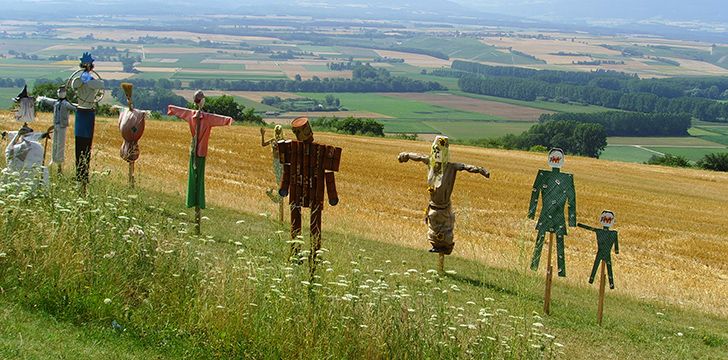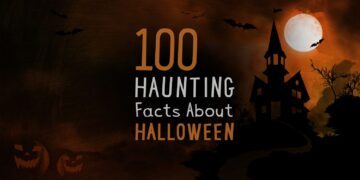Scarecrows are such an ordinary creation, it’s strange to think that there’s actually a history behind them.
So if you’re in search of a costume and you’re keen on being something classic yet unique, a scarecrow could be a great idea!
But first, there are a few things to know about this typical fall symbol…
Scarecrows were originally made to do exactly what their name suggests: scare off crows and other birds that might ruin the farmer’s crops.
Scarecrows have been around longer than you might think – the first scarecrows known to history were made about 3,000 years ago!
They were first made by the Egyptians to protect their wheat fields, especially along the Nile River.
Even though they’ve been around for so long, there have since been more effective ways to scare off birds.
In the past, attempts were made to use machinery to replace scarecrows, such as windmills.
However, birds are smarter than you might think, and they quickly become familiar with these structures.
Some of these attempts include hanging tins in trees or noise guns. But crows being adaptable as they are, usually realize it’s a trick and enter the fields after a time anyway.
Originally, Greek farmers would fashion their scarecrows to look like Priapus, who was the son of Dionysus and Aphrodite.
The myth goes, Priapus lived near vineyards and he was supposedly very ugly. So whenever Priapus played in the vineyards, it scared the birds away and improved the harvest.
However, there is more to it than just how a scarecrow looks. Birds are scared off also because of the smell of humans that linger from the clothes of a scarecrow.
Japanese farmers have also used scarecrows in the past, however, they would hang old rags, meat, and fish bones on their creations. The smell itself was enough to keep not only birds but all creatures away from their crops.
German farmers used to make wooden witches for their fields because they believed the witches would draw the evil spirit of winter into their bodies.
There are surprisingly dozens of scarecrow festivals every year, many of which are held in the United Kingdom.
The Urchfont Scarecrow Festival has been running since the ’90s and draws in up to 10,000 people every year.
The first known usage of the word “scarecrow” in English novels was in 1719 in Robinson Crusoe, written by Daniel Defoe.
In Medieval Britain, there was an actual job for young boys called a “bird scarer” who wandered the fields with bags of stones to throw at the birds.
Unfortunately, after The Great Plague, the population was so low and there were not enough bird scarers, so farmers started making scarecrows to put in their fields.
The most famous scarecrow is the fictional character in The Wizard of Oz who is in search of a brain.
Another notable scarecrow is in the short story written by Nathaniel Hawthorne called “Feathertop” about a scarecrow brought to life by a witch.
The framework for Feathertop later was used for a play written in 1908 by Percy MacKaye which ended up going to Broadway.
A winery in New York has used inflatable tube men as scarecrows.
The oldest surviving Japanese book (written in the year 712) there is a scarecrow referred to as “Kuebiko” who is a deity that cannot walk but knows everything about the world.
Both DC and Marvel have a comic character named “Scarecrow,” though they are completely different characters. In both universes, they are villains.
Around the U.K., scarecrows have many different nicknames depending on where you are, such as Hodmedod, Hay-man, Gallybagger, Tattie Bogal, Bwach, and more.
There is a Japanese village called Nagoro which has 35 inhabitants, but over 350 scarecrows!
Scarecrows have also made their impact in music – the popular band Pink Floyd has a song called “The Scarecrow” which can be found on their debut album.
There is a tourist attraction in Canada called Joe’s Scarecrow Village which is a roadside attraction featuring dozens of scarecrows.
Nowadays, scarecrows are usually just used as a symbol for fall and harvest instead of practical use.
The world record for the largest gathering of scarecrows in one location is held by National Forest Adventure Farm in the U.K., with 3,812 scarecrows.
This scarecrow world record was achieved on August 7, 2014, in Burton-upon-Trent.


















